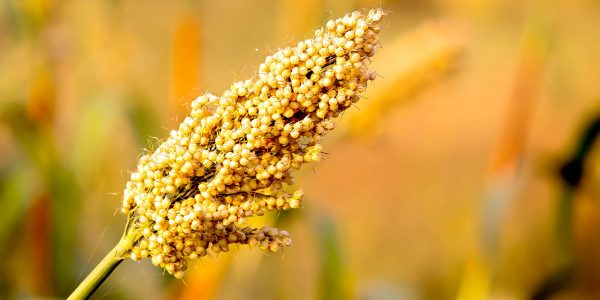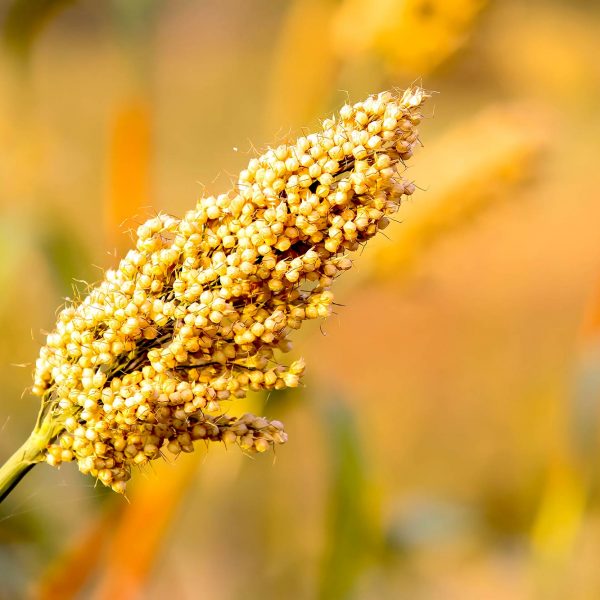
Sorghum Plant-Based Protein and Antioxidants
Sorghum is a whole grain grown in America with many health benefits. In fact, sorghum is the fifth most important cereal grain in the world. Sorghum is a versatile grain that can be enjoyed on salad, in soups and much more. Discover sorghum’s role as a plant-based protein and good source of antioxidants.
DIETARY PATTERNS
The 2015-2020 Dietary Guidelines for Americans indicates healthy eating patterns and regular physical activity can help people throughout all stages of life achieve and maintain good health and reduce the risk of chronic disease. To meet nutrient needs within calorie limits, it is suggested to focus on amount, variety and nutrient density. Current dietary patterns show that plant-based protein is a growing trend in America. Sorghum is a plant-based protein that can help achieve recommended dietary requirements.
PROTEIN 101
Proteins are large organic compounds made of one or more amino acids. Protein is an essential nutrient required for growth and development. It supports cellular structures, organs and muscle mass and is important for bone, immune and skin health. Nine essential amino acids include tryptophan, threoline, isoleucine, leucine, lysine, methionine, phenylalainine and valine.
A dietary plan that includes 25-30 grams of high-quality protein per meal may help to maximize muscle protein synthesis and contribute to a healthy weight.1 Dividing protein intake evenly throughout the day may be a particularly important consideration for elderly populations who are at risk for sarcopenia – the degenerative loss of skeletal muscle mass that occurs with aging.2
A PLANT-BASED PROTEIN
It is important to consume a good mix of protein sources to achieve a balanced diet. Sorghum is a meaningful source of plant-based protein clients should consider adding to their plates to achieve recommended nutrient requirements. In fact, sorghum contains 10.62 grams of protein per 100 grams.3 Plant-based protein sources, like sorghum, are high in fiber, vitamins and antioxidants, which promote bone, heart and immune health.
AMINO ACID CONTENT OF SORGHUM4
| Tryptophan | 0.124 |
| Threonine | 0.346 |
| Isoleucine | 0.433 |
| Leucine | 1.491 |
| Lysine | 0.229 |
| Methionine | 0.169 |
| Phenylalanine | 0.546 |
| Valine | 0.561 |
| Histidine | 0.246 |
*Values analyzed per g of 100g of uncooked whole grain sorghum.
SORGHUM & ANTIOXIDANTS
Whole grain sorghum contains a number of biologically active nutrients including phenolic compounds, avonoids, condensed tannins and anthocyanins. These phytochemicals possess antioxidant activity, which is important for the body’s cells to combat oxidative stress. Current research suggests decreasing oxidative stress and inflammation with the daily consumption of antioxidants can help lower the risk of chronic diseases, including cancers, heart disease, type 2 diabetes and some neurological diseases5. The consistent consumption of food containing significant levels of phytochemicals and dietary fiber correlates with tangible disease prevention. Overall, epidemiological evidence suggests sorghum has anti-carcinogenic properties when consumed regularly in the diet.6
ANTIOXIDANT ACTIVITY
The bran fractions of certain varieties of sorghum grain are rich in antioxidants. Sumac sorghum bran is a rich source of condensed tannins, also known as proanthocyanidins, specifically containing epicatechin and catechin. Black sorghum bran contains anthocyanins, including 3-deoxyanthocyanins (apigeninidin) and luteolinidin.7 The high levels of 3-deoxyanthocyanins are relatively rare in nature and are effective natural colorants compared to other plant anthocyanins6,7. The antioxidant activity of black sorghum bran is higher than that of some fruits, such as blueberries.6 Other research suggests sorghum’s condensed tannins may reduce the growth of malignant cells in melanoma8 and gastrointestinal cancers.9 However, more research is needed to establish a specific dose response relationship.
KEY TAKEAWAYS
- Sorghum is an important source of plant-based protein, containing 10.62 g/100 g.
- Plant-based protein sources, like sorghum, are high in fiber, vitamins and antioxidants, which promote bone, heart and immune health.
- Phytochemical compounds, including condensed tannins and anthocyanins, mainly located in the bran fraction, result in certain sorghum varieties having substantial antioxidant properties.
- The consistent consumption of foods, including sorghum, containing significant levels of phytochemicals and dietary fiber correlates with significant disease prevention.
Quick Facts
Did you know sorghum can be served like rice or quinoa? Take advantage of sorghum’s plant-based protein and antioxidants by adding it to your favorite breakfast, lunch and dinner meals! Plus, you can easily cook it using your stovetop, slow cooker, oven or rice cooker!
References & Notes
1Leidy H, et al. Am J Clin Nutr 2015;101(6):1320S-1329S.
2Paddon-Jones D, et al. Curr Opin Clin Nutr Metab Care 2009;12:86-90.
3Value based on uncooked whole grain sorghum
4USDA National Nutrient Database for Standard Reference. 2016:Release 28.
5Kondola K, et al. Int J Cosmet Sci. 2015;37(2):1-8.
6Awika JM, et al. Phytochemistry 2004; 65:1199-1221.
7Burdette A, et al. J Med Food 2010;13(4):1-9.
8Gomez-Cordove?s C, et al. J Agric Food Chem 2001;49(3):1620-4.
9Yang L, et al. J Agric Food Chem. 2009;57(5):1797-804.
*Information retrieved from Jane Dummer- Release 2016


